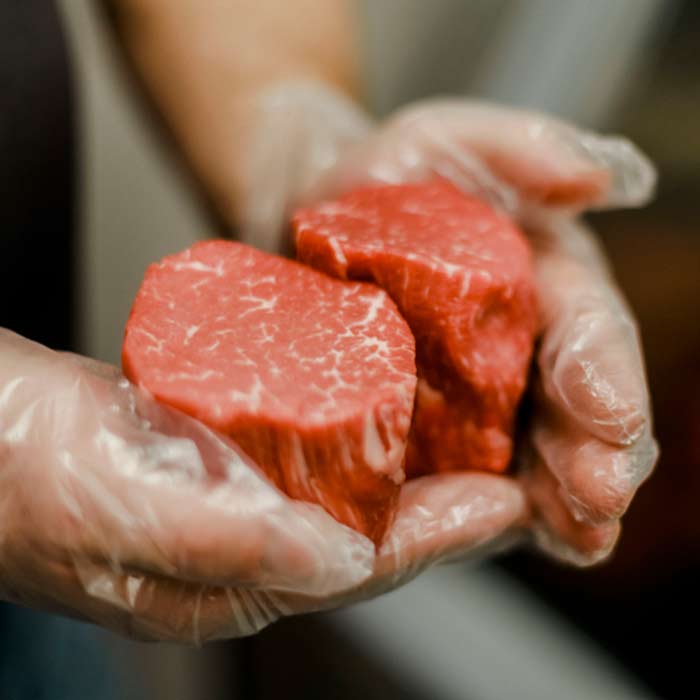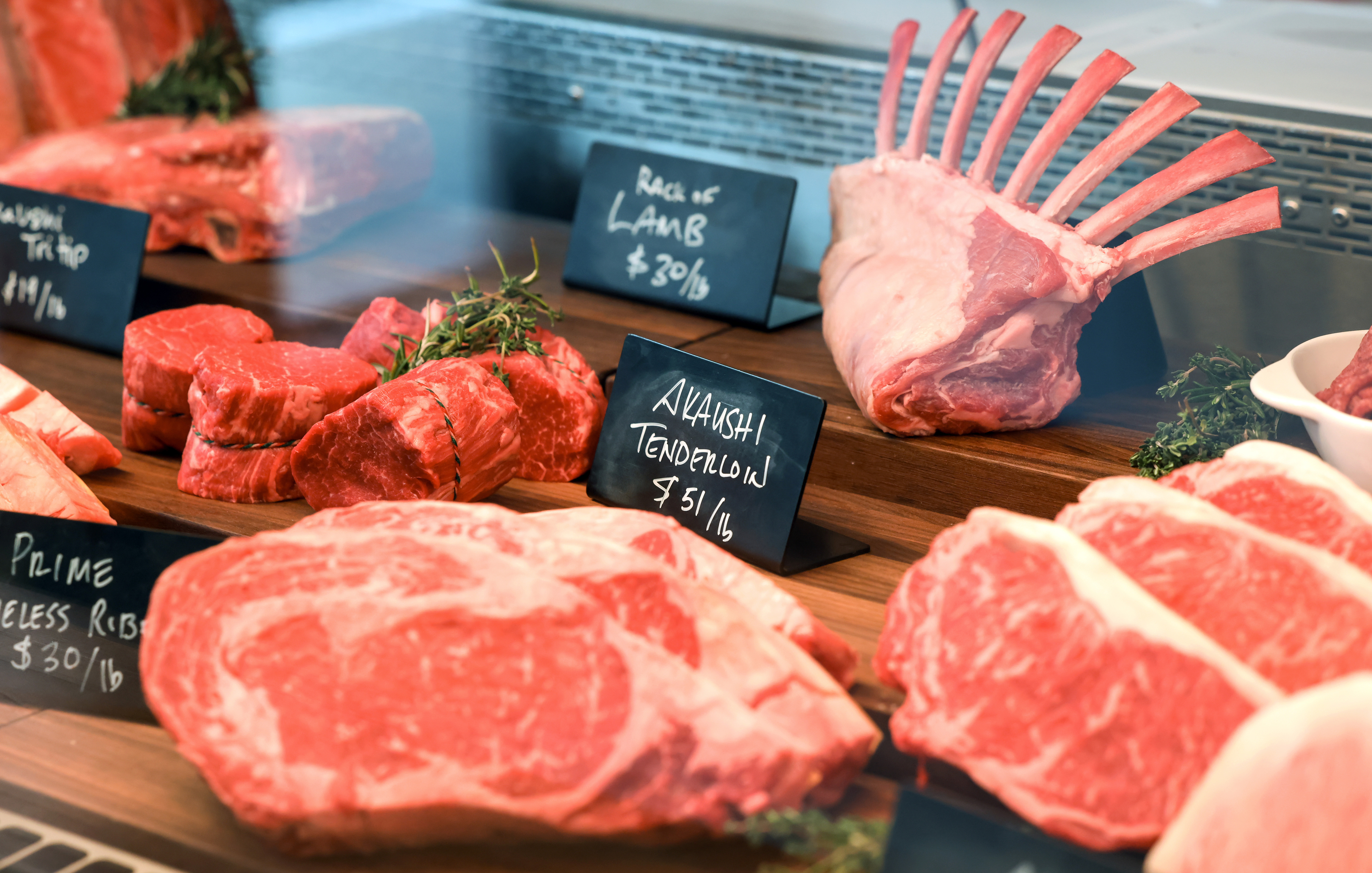Discover the Art of the Butcher's Cut in a Modern Meat Market
In the ever-evolving landscape of modern-day meat markets, the butcher's cut has actually transcended its typical roots, combining old-time workmanship with modern methods. What absolutely sets the modern butcher apart is their capacity to create a deeper connection between customers and the origins of their meat.
Development of Butchery Techniques

The mid-20th century saw butchery techniques further fine-tuned by scientific insights right into muscle mass biology and meat aging, enhancing both inflammation and taste. Technologies like vacuum packaging and refrigeration expanded product shelf-life, enabling butchers to diversify offerings and enhance high quality control. This period likewise noted the rise of specific equipment, such as band saws and meat slicers, which raised accuracy and performance in meat processing.
Computerized systems now aid in tracking pet provenance and maximizing cuts to fulfill certain client preferences. Additionally, a resurgence in artisanal butchery has actually arised, blending conventional abilities with modern understanding to provide to customers seeking ethical and lasting meat choices.

Comprehending Meat Cuts

Understanding the ins and outs of meat cuts is crucial for both butchers and consumers seeking high quality and value. Each cut comes from a various component of the animal, imparting one-of-a-kind tastes, textures, and cooking methods. Mastery of these differences not only enhances cooking experiences but likewise takes full advantage of the utility of each carcass. For butchers, specific cuts reflect ability and respect for the craft, making certain very little waste and optimum yield.
The key categories of meat cuts consist of primitive, sub-primal, and retail cuts. Primitive cuts, such as the loin, rib, and chuck, are the large areas originally divided from the carcass. Butchers then damage these down even more into sub-primal cuts, before ultimately generating retail cuts available to customers, like ribeye or tenderloin. Each stage needs careful interest to physiological structure and muscle mass composition.
Recognizing muscular tissue make-up is essential; muscular tissues used much more regularly by the pet tend to be tougher and are best matched for slow cooking techniques, while less-used muscular tissues, like those located in the loin, are more tender and suitable for barbecuing or roasting. Knowledge with these differences empowers consumers to make educated options, boosting their cooking undertakings.
Choosing Quality Meat
Choosing the best meat involves greater than just selecting an aesthetically enticing item from the screen. The art of choosing quality meat requires a discerning eye and expertise of details features that indicate quality and excellence. First of all, pay attention to the color; beef needs to have an intense, cherry-red color, while lamb must display a soft pink tone, and pork a pale pink. This indicates the meat is fresh and hasn't been revealed to oxygen for also long.
Second of all, think about the marbling, which refers to the white streaks of fat within the muscle. Correct marbling is a crucial indicator of inflammation and flavor, as it thaws during food preparation, improving the meat's juiciness. Bear in mind, higher marbling frequently associates with premium top quality cuts, such as USDA Prime.
Texture is an additional vital variable; meat must feel solid to the touch, not slimed or excessively soft. In addition, be conscious of the scent. Fresh meat must have a clean, neutral odor, devoid of any type of sour or repulsive odors.
Coupling Cuts With Food Preparation Methods
Successfully coupling cuts of meat with the ideal food preparation approaches is important for accomplishing optimum taste and appearance. These methods enhance the meat's natural flavors and ensure a juicy finish.
On the other hand, tougher cuts like brisket and chuck roast are rich in collagen, which breaks down right into jelly when prepared gradually. These cuts are suitable for braising or slow-moving roasting, enabling the meat to tenderize gradually and establish deep, complex flavors. Cuts such as short ribs and pork shoulder fare well with slow-cooking approaches, where expanded cooking times change their robust textures right into delicious dishes.
Lamb shanks and oxtail, which require long linked here term food preparation to soften, are ideal candidates for cooking or slow-moving simmering. These approaches coax out abundant, hearty flavors while keeping wetness. By comprehending the unique features of each cut, cooks and home cooks alike helpful resources can elevate their cooking productions, making certain each meal is both satisfying and memorable.
The Butcher's Function Today
Navigating the evolving landscape of the contemporary meat market, the butcher's function today extends past mere prep work of cuts. Contemporary butchers are culinary craftsmens, teachers, and advocates for lasting techniques. They connect the gap in between the farm and the fork by making certain honest sourcing, recognizing animal husbandry, and focusing on transparency in the supply chain. This change reflects the expanding consumer demand for top quality over quantity, where provenance and pet welfare are extremely important.
In enhancement to crafting specific cuts, butchers now engage directly with clients, providing cooking suggestions and customizing options to suit private demands and preferences. Their knowledge in you could try these out meat aging, marbling, and taste accounts encourages customers to make educated choices, improving their culinary experiences. This customized solution exhibits the butcher's evolving function as a trusted expert in the cooking area.
Moreover, butchers are essential in lessening waste, utilizing whole animals to develop diverse items such as sausages and stocks - bagley farms meat market edwardsville il. This comprehensive approach not only respects the animal but likewise straightens with contemporary sustainability goals. In this method, the contemporary butcher symbolizes both practice and technology, adjusting to an ever-changing market while maintaining the artistry and honesty of their craft

Final Thought
The contemporary butcher's craft delicately weaves standard techniques with modern-day advancements, emphasizing lasting practices and moral sourcing. Mastery in understanding varied meat cuts and quality indications empowers butchers to give educated recommendations, lining up specific cuts with ideal cooking techniques. This knowledge not just elevates cooking experiences but additionally strengthens the link between consumers and the beginnings of their food. By honoring historic techniques while accepting modern demands, the butcher's function continues to be important in today's innovative meat market.